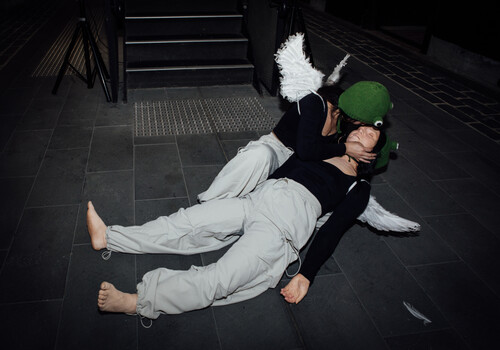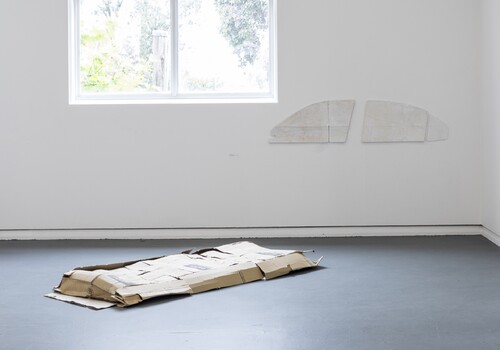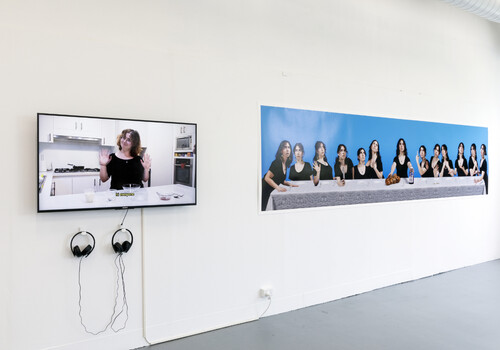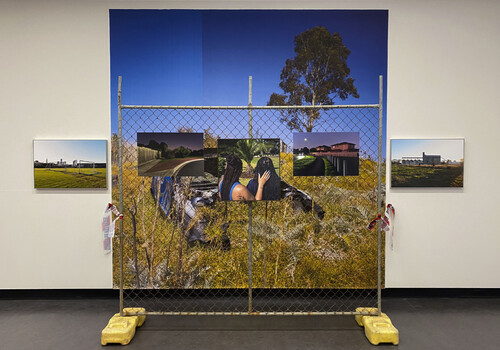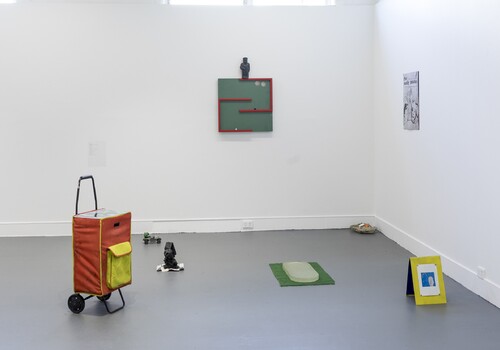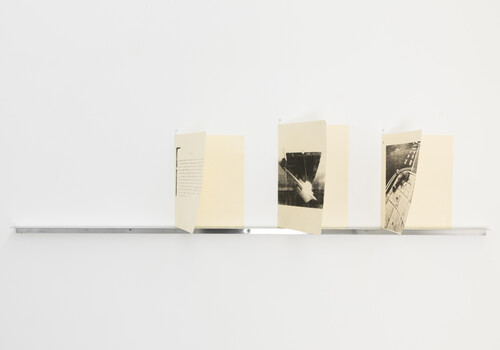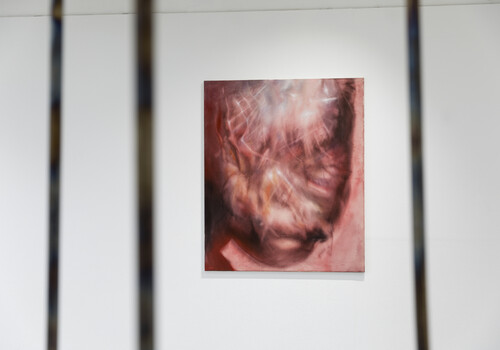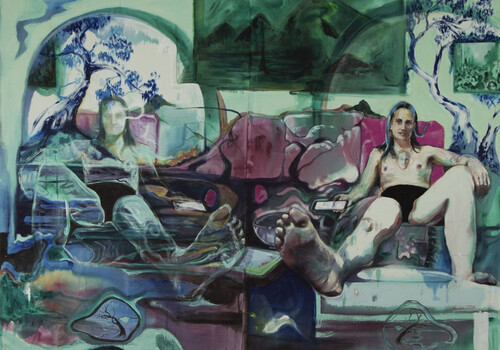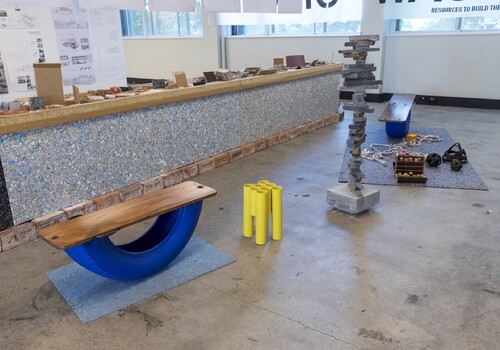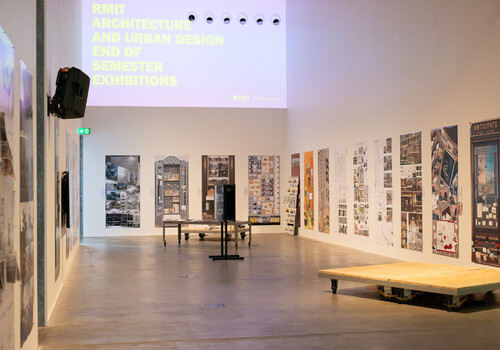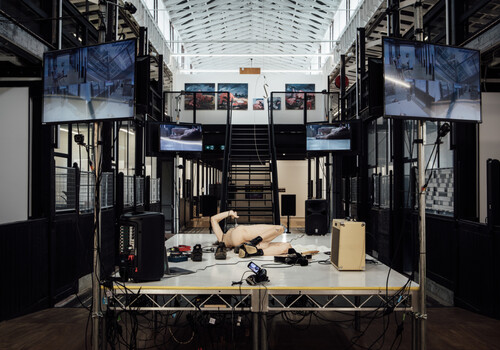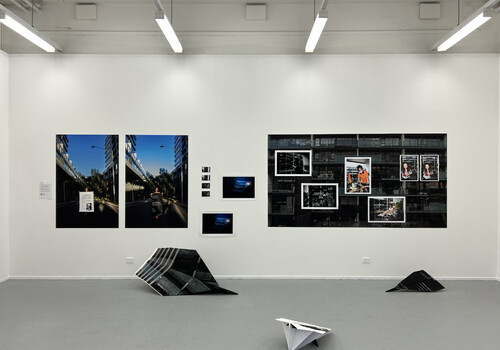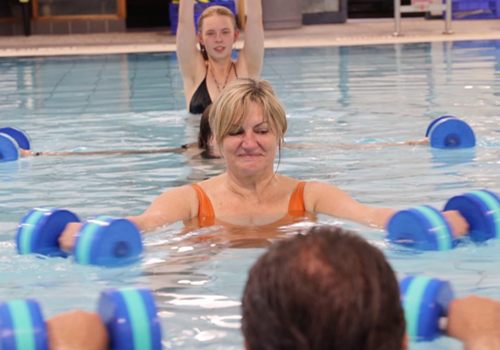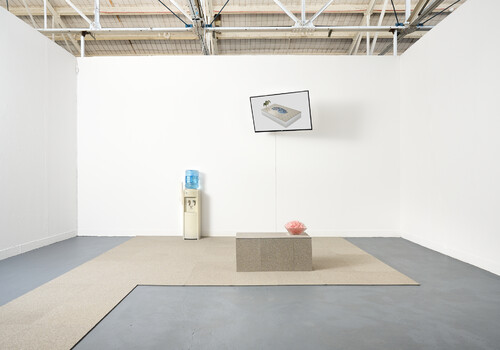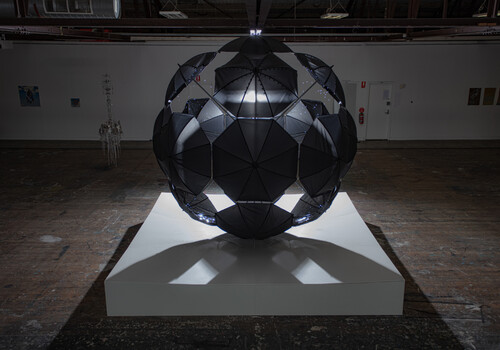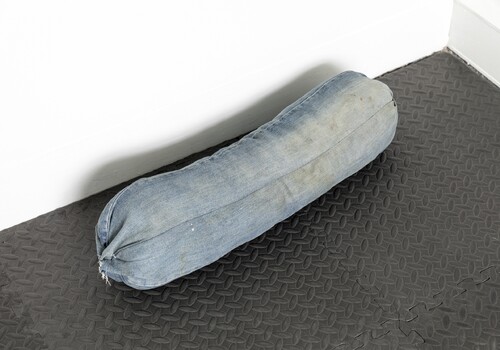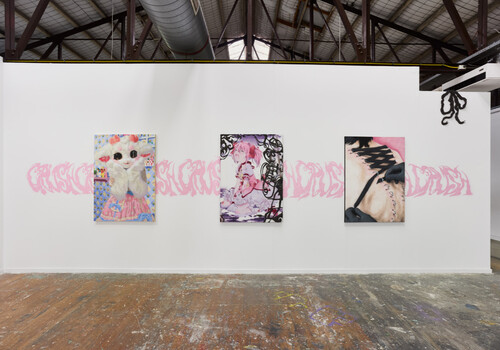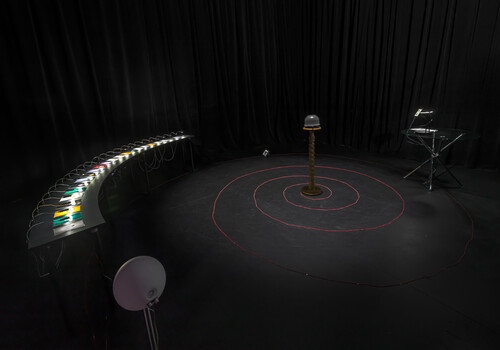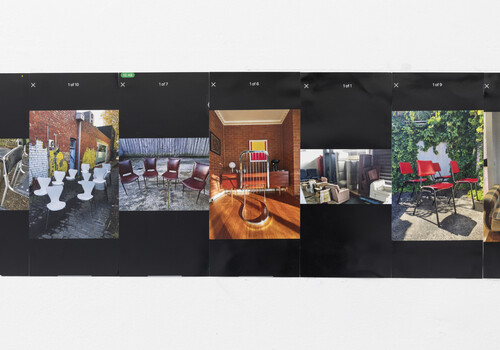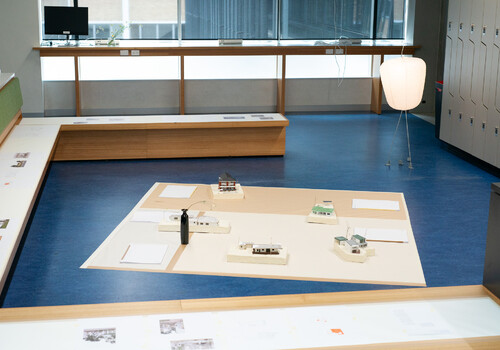Bachelor of Fine Art (Honours), MADA
By Sen Vanderzalm
We could engage in the mental gymnastics of contemplating how the following works provoke the ‘what is a chair?’ conundrum. But I think a better question for the purpose of this review is what good is a chair if you can’t sit on it? Because when artworks eradicate the normative function of design objects, they inevitably become vessels for broader conceptual pursuits. So, what exactly goes on at this juncture?
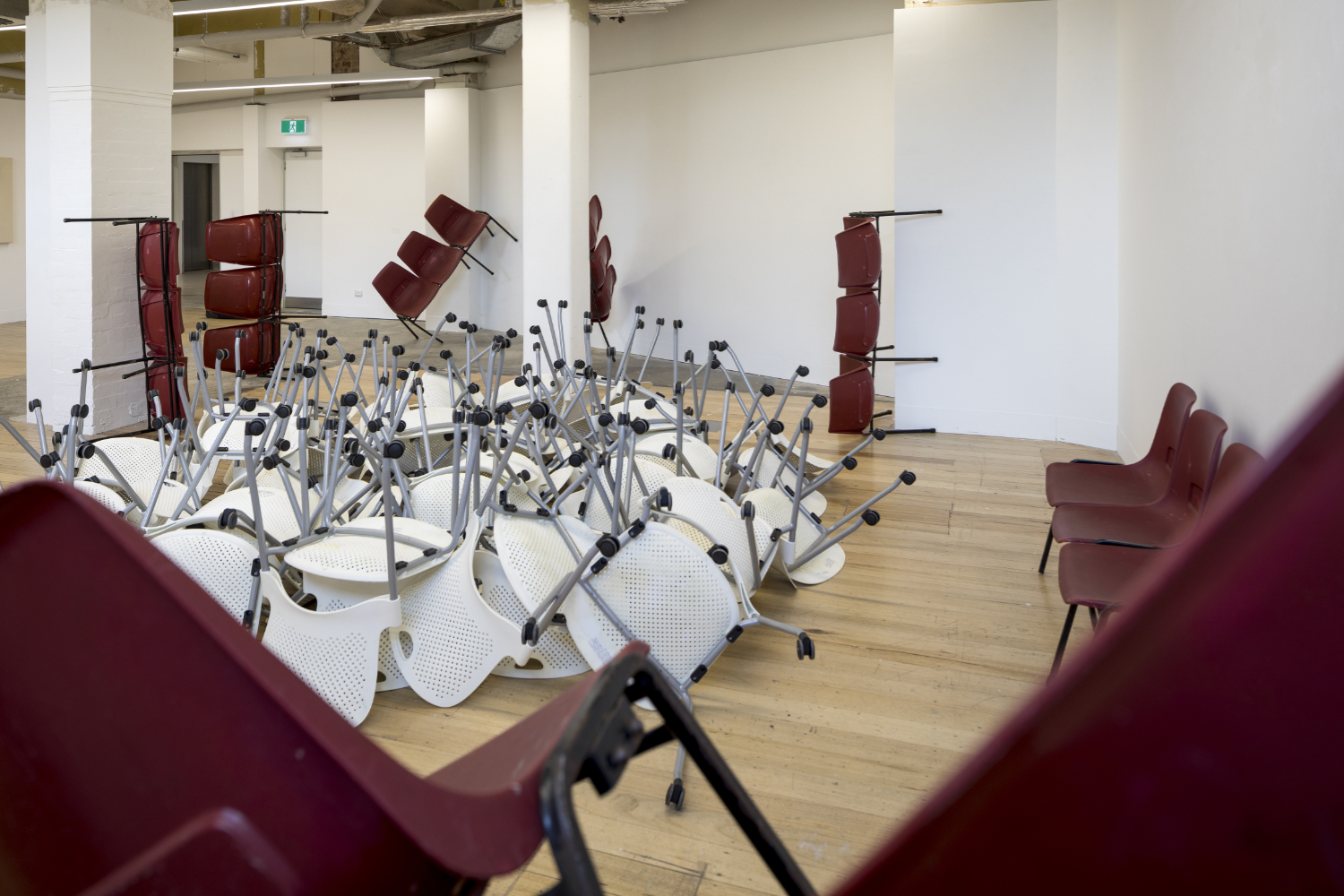
Looking first to Fine Art Honours graduate Lilly Skipper and her work A Horizon (2023), a cluster of white Herman Miller chairs homogenise to form a precarious intervention. Each one is flipped so that it bears its legs and wheels to the ceiling, as if it has been thrust toward a homing beacon like an unsuspecting moth to a flame. As they each congregate in this peculiar assemblage, they are inaccessible for use to the viewer, not reducing them to something other than a chair but certainly impinging upon their ability for people to sit on them comfortably. As such, Skipper’s utilisation of materials available on site at the University vehemently rejects the notion of a chair in work-orientated spaces, as she physically subverts their purpose of facilitating productivity.
Encompassing A Horizon is Skipper’s work Situation No. 4 (2023), which is the fourth instalment of a series where she exhibits ten rows of three conjoined burgundy chairs in uncouth positions. However, in this instance, rather than flipping them, she erects the chairs onto their side, creating an equally unruly configuration but piercing the space in terms of height. This notion provides a necessary occupancy that lends to the works a commanding presence and rejection of its obligation to serve an intended purpose or fit neatly within the confines of a room. Thus, Skipper’s utilisation of space is to occupy it, to pervade it and observe how viewers interact with her dissident interventions.
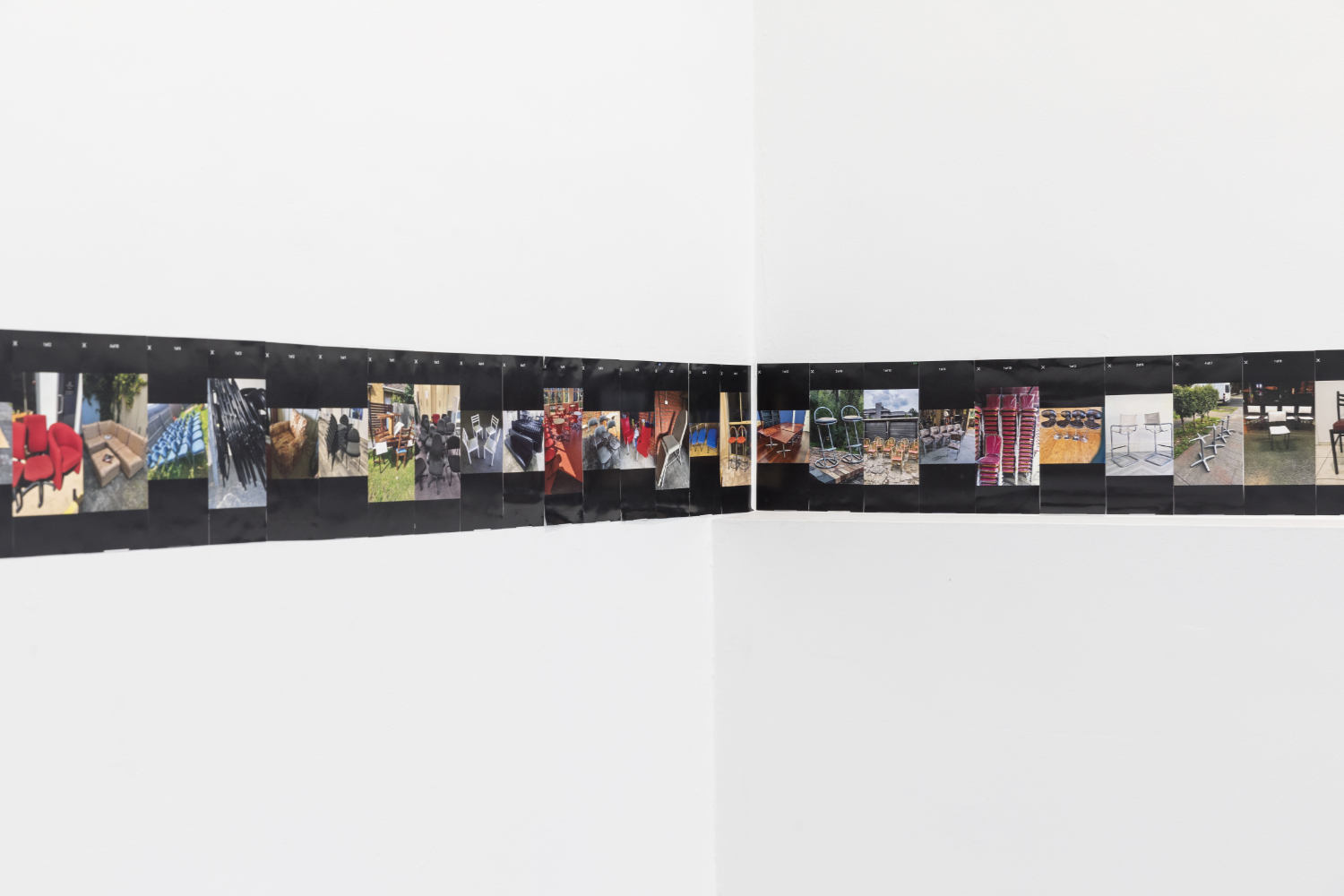
Pivoting now to Bachelor of Fine Art graduate Serena Holt, her work Chairs in left space, Chairs in centre space and Chairs in stair space (2023) pictures a series of screenshots featuring chairs listed for sale on Facebook marketplace. All positioned at eye level, their presentation forms a consistent line that tracks along the walls of the compact and otherwise empty room. She centres this banal activity and subject matter as something of importance, rendering the sellers as unlikely creators and the chairs as sculptural compositions. By doing this, she disrupts the intended transaction and champions the aspects of no monetary worth. Though thrusting something as common in the digital age as a marketplace listing into an arts space is not a new concept, Holt skilfully utilises such a theme without the work appearing as a contrived pastiche of the contemporary experience. She avoids this through the work’s visual simplicity, as her minimal interference allows us to see their accidental or unnoticed appeal. As such, the stacked silhouettes and glimpses into the sellers’ personal lives transcend their intended purpose of items for sale and instead become images of curiosity.
Whilst Skipper’s work urges us to consider alternatives to hegemonic ways of being through acts of defiance, Holt favours a less dextrous but equally as profound approach to directing our attention to the neglected aspects of our surroundings. These artists both produce and express a necessary uncomfortableness, and I believe this sense of unease arises because each work contemplates how we interact, not with objects of design, but the spaces they occupy: online and physically. As such, it appears the chair itself holds little to no significance, as it could theoretically be subbed in for just about any other inanimate object so long as it is rendered useless. However, this is not entirely true. Just as we do not have the words to adequately describe exactly what a chair is, Lilly Skipper and Serena Holt utilise it to express the inability to make sense of our state of being and the structures we are expected to operate under.
Sen is a poet and multidisciplinary artist currently completing a double degree in Art History / Curation and Media Communications at Monash University.
